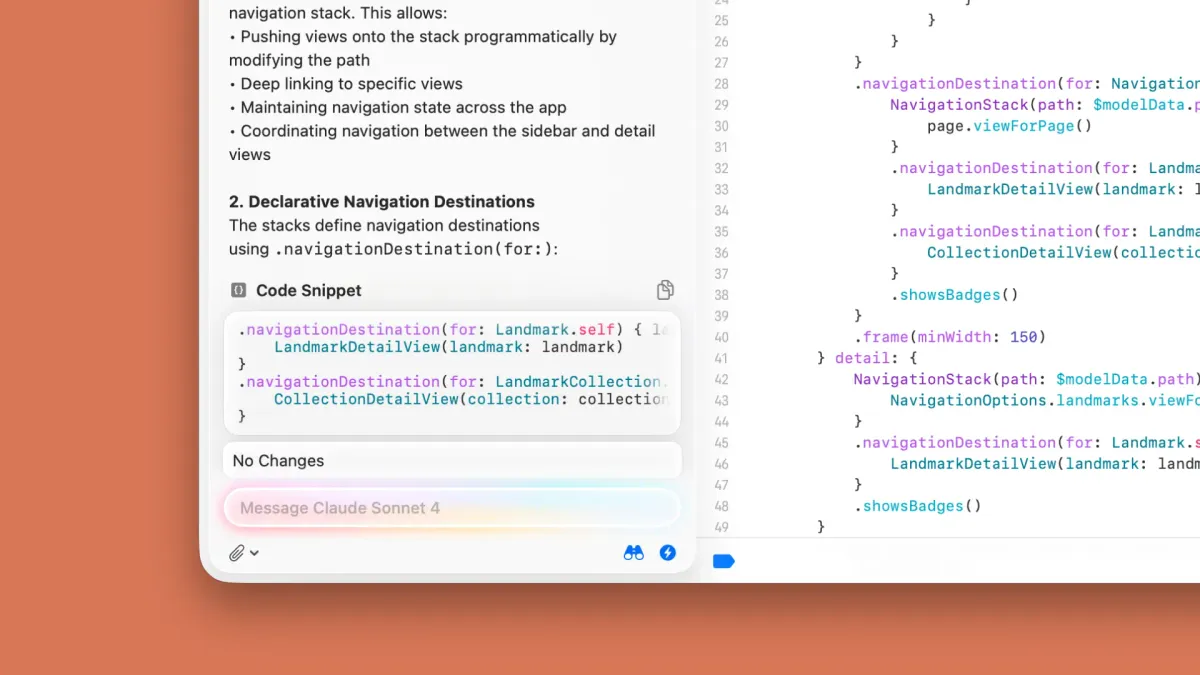Apple and Anthropic integrate Claude Sonnet 4 in Xcode 26 on macOS

Apple’s latest Xcode 26 quietly gained a powerful co-pilot the "Anthropic’s Claude Sonnet 4" and that matters for anyone building software on the Apple stack. Developers can now sign into a Claude account inside Xcode and tap coding intelligence for writing, explaining, refactoring and even making inline edits without leaving the editor.
Why Apple and Anthropic partnership makes strategic sense
First, developers crave speed and fewer context switches. Putting Claude directly in Xcode cuts the back-and-forth with external chat apps or browser tabs. The payoff is practical generate documentation, get targeted explanations of selected code, spin up SwiftUI previews, and apply edits in place. That’s “minutes not hours” for many small tasks that pile up across a sprint.
Second, Apple gets optionality. Over the last year, reporting made it clear Cupertino wasn’t going to bet on a single AI supplier for developer tools. Work with Anthropic on an Xcode assistant has been described since spring, and today’s shipping integration suggests Apple is happy to meet developers where the strongest model performance is, rather than forcing a one-vendor future. For executives, that’s a healthy sign of platform pragmatism.
Third, Anthropic gets front-row distribution. Xcode is installed on millions of Macs across professional teams and indie shops. The integration routes those users through a Claude login and plan eligibility, a straightforward path to usage growth that doesn’t rely on separate plugins or marketplace discovery. It’s classic platform leverage, now pointed at coding work.
What changes on the ground for teams
Shipping velocity improves
Expect faster unit tests, documentation, and first-draft implementations. Claude in Xcode auto-gathers project context and keeps conversation history tied to your codebase, which makes it useful for incremental work like refactoring a view, debugging a crashy edge case, or sketching a clean Room or Core Data layer. The less glamorous glue work gets more bearable, and senior engineers can hand off more starter tasks without turning into full-time reviewers.
Code quality gets a floor if you use it right
Model-suggested changes aren’t magic. Treat them like code from a junior teammate: review diffs, run tests, and insist on linting. Teams that define a simple policy — when to use the assistant, how to document prompts, who owns final review — will see real lift without creating mystery code or compliance headaches. Apple’s docs and release notes show the assistant as an editor-native tool, which makes governance easier than ad hoc copy-paste from the web.
Hiring and training shift toward code orchestration
As more routine edits and boilerplate flow through Xcode’s intelligence, the differentiator becomes problem framing and orchestration. Senior developers will spend more time specifying intent and validating outcomes. Juniors will learn faster by seeing side-by-side explanations, not just final code. That’s a cultural change worth leaning into with updated onboarding and pairing practices.




